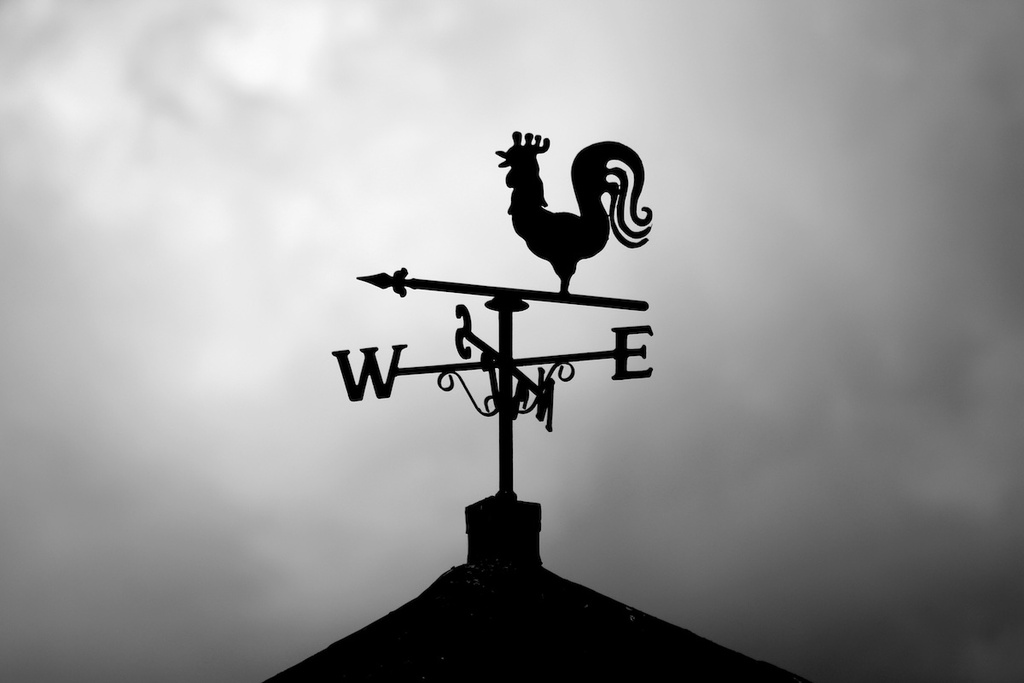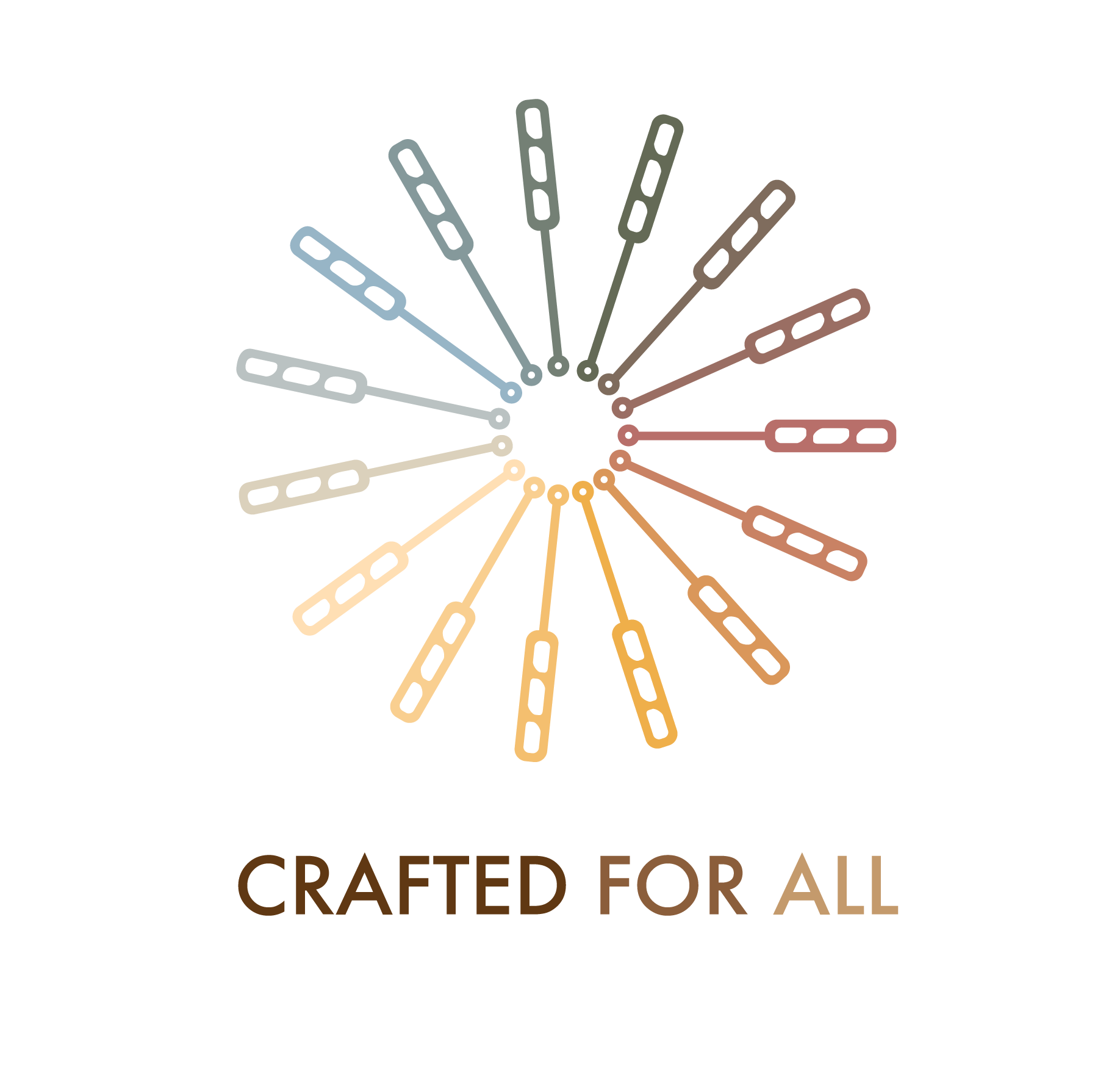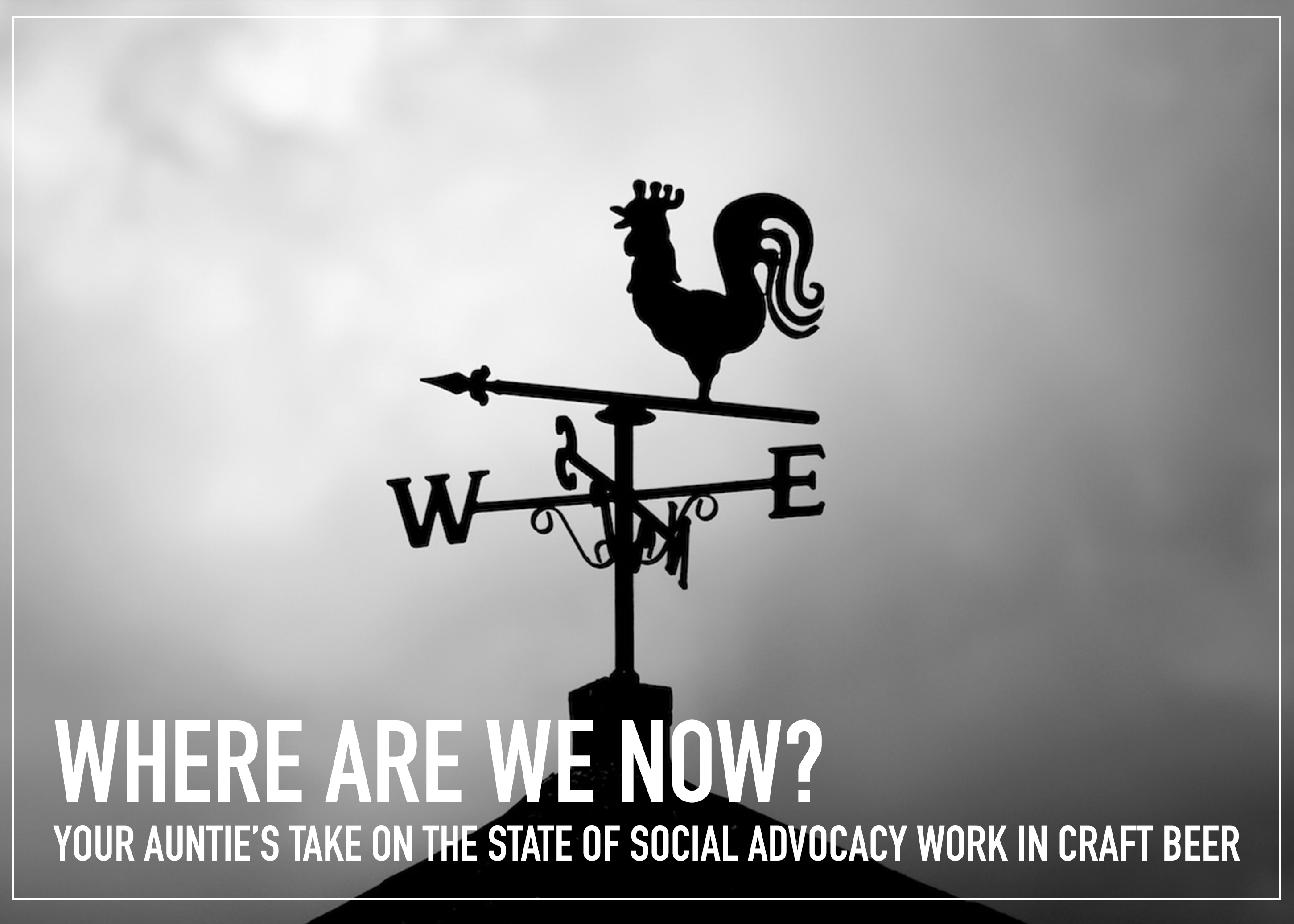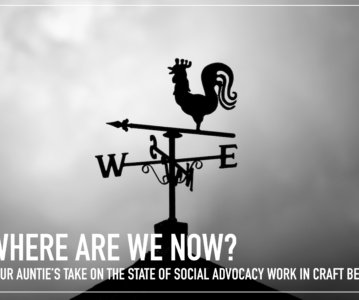This is the second part in the Topics in Social Advocacy for the Craft Brewing Industry series. Read Part 1 to get caught up.
Each year at the Craft Brewers Conference, my Brewers Association colleague Bart Watson provides a “State of the Craft Brewing Industry” address. I count myself among the many who believe his annual talk is one of the highlights of the conference.
The data and insights that Bart provides are invaluable. But to be honest, there’s more to admire in his address than the numbers. Stylistically, Bart may be one of the clearest and most subtly impactful public speakers out there. He doesn’t rely on gimmicks or razzle dazzle–just impeccably organized, data-driven presentations that are flawlessly delivered with personality and just a smidge of humor. If armed with the parade of charts that Bart takes the stage with, many of us would bore an audience into unconsciousness. But Bart’s facts, figures, trends and percentages go down easily because he keeps his audiences’ eyes on the prize–three or four big takeaways that set the tone for the rest of the conference (and, frankly, for the rest of the year.)
As you can tell from the title (and short introduction that I provided in Part 1 of this series), this installment in our course aims to provide an overview of the broader project of social advocacy in craft beer. And though I will never have the ability to do what Bart does in his state of the industry addresses, I hope to do a reasonable impression of him in this post.

For what it’s worth, what I’ve lost in edge and visibility as something of a provocateur, I’ve gained in efficacy and impact.
I will make that trade every f*cking day.
Importantly, this state of the project assessment comes from me—your craft beer Auntie. “Auntie,” for the uninitiated, is a term that is used widely (but not exclusively) by the Black community for older women who have a unique blend of wisdom and personality. Not everyone likes this term. Some even find it problematic. (Those who are inclined to unpack things, I invite you to unpack away.) However, please know that I am personally embracing “Auntie” as a term of endearment and conspicuously making use of three things it suggests.
Suggestion 1: Your auntie has been around the block a few times. I am by no means an “old timer” when it comes to the craft beer space. But at this juncture, I have been around for a while, particularly when it comes to the practice of social advocacy. I’m not going to rehash my origin story here (it’s out there if you really want to hear it), but my organized social advocacy work in the beer space started around 2008. So realistically, I’ve been on my bulls**t for about 15 years now. Aunties are known for speaking with an air of certainty that may sometimes inspire raised eyebrows. I will kindly ask that you keep those eyebrows to yourselves, friends. This Auntie has seen and been through some things.
Suggestion 2: Your auntie has a lot of opinions. Aunties are known for offering their opinions…whether you asked for them or not. You put raisins in the potato salad? Auntie has some feelings about that. You leaving the house with all your goodies showing? Auntie has some feelings about that. You still only drinking pastry stouts and fruited kettle sours? Auntie has some feelings about that. You trying to change the radio station while Auntie is listening to her Adina Howard bop? You must not be fond of that hand. In true Auntie form, I will be raising a lot of questions, and you will most likely be able to deduce my opinion about those questions from the way I go about asking. Just keep in mind that opinions are always subjective. Auntie’s just perform “rightness” because we feel that we’ve earned that right.
Suggestion 3: Your auntie loves you. Perhaps most importantly, the wisdom, personality, authority and strong opinions of Aunties are frequently deployed in the service of love. In fact, Aunties love ferociously. It is precisely that ferocious investment in the well-being and happiness of those we Aunties call “our people” that puts the edge on our sarcasm and the gray in our hair. The love of an Auntie is freely given. It’s not the love of obligation or title, as with Mommas and Grannies, but a love of loyalty offered without an expectation of reciprocity. It is an abrupt and direct and forceful love that is offered without shame and is unbothered by the anesthetizing effects of social propriety.
If you are reading this…I love you. Not because you want or need my love, or because you have earned it or deserve it. I love you because it’s my business. And speaking of business, let’s get down to it.
The Rapidly Shifting Paradigms of Social Advocacy in Craft Beer
Like most “state of the ________” analyses, I will start this look at the project of social advocacy in craft brewing by taking a look back in order to provide context for where we are now. Though the time horizon I will be covering is only 15 years or so, I think it makes the most sense to characterize this history as a set of paradigm shifts. And when one considers that CBT (craft beer time) is something on par with dog years, the framework feels appropriate.
A paradigm is a set of concepts, thought patterns, and actions that form the basis of a particular understanding of, and approach to interpreting, the world–in our case the world of social advocacy in craft beer. Importantly, a paradigm has a set of fundamental assumptions–that are often unspoken and even unrealized.
Social advocacy efforts in the craft brewing industry have been grounded in four related paradigms. While elements of each of these paradigms coexist and have always done so, I believe that each has had a moment when it has been the dominant way we’ve thought about the effort to produce social change in the industry. As such, I will discuss them in a roughly chronological order. What’s more, the consciousness-raising paradigm, business development paradigm, crisis response paradigm, and opportunity-making paradigm each have some inherent strengths and limitations that I will briefly discuss.
The Consciousness-Raising Paradigm
Key Concepts:
- Raising awareness
- Underrepresentation and disparity
- Statements of belief
Thought Patterns:
- The “ah-ha” moment
Typical Actions:
- Seeking out and listening to thought leaders
- Engaging in social media dialogue on related topics
Fundamental Assumption:
- Members of the industry aren’t aware that there are striking disparities in who participates in the industry and the experiences people have in the industry. If they become aware, things will change.
Strengths:
- Low threshold for start-up
- Little needed in terms of resources
Weaknesses:
- No “teeth” to drive big changes
- Often not actionable
- Expertise vacuum created in the absence of thought leaders
Consciousness raising is a form of activism popularized by feminists in the late 1960s. It often takes the form of a group of people working to focus the attention of a wider group on some cause or condition by sharing personal experiences, shining a light on hard truths, surfacing data, and revealing stereotypes.
The consciousness raising paradigm in the craft brewing space marked the start of serious conversations about the way that our industry reflects and sometimes contributes to broader patterns of social inequity, particularly as it relates to the DEI space. The Pink Boots Society, founded in 2007-2008, was an important early voice in boldly stating what many assumed to be obvious–the craft beer space lacks representation from most groups in the general population. My own contribution to this conversation came in 2012 as I was wrestling with a doctoral dissertation on the cultural dynamics of the post-Prohibition American brewing industry (not to mention my own participation in a social, hobby, and professional space where I felt simultaneously that I’d found “my people” and violently othered).
This paradigm dominated social advocacy efforts, often in the form of panel discussions and media reporting, until some of its weaknesses forced a shift in the conversation. Creating more awareness of the disparities and lack of representation in the industry was a critical baseline to establish, but very quickly advocates and activists recognized that awareness does not necessarily drive action.
The Business Development Paradigm
Key Concepts:
- Business cases for diversity
- Organizational culture
Thought Patterns:
- Positive social impact is a product of good business practices and policies.
- Business can be a force for good.
Typical Actions:
- DEI and sexual harassment prevention training
- Corporate pledges
- Inclusive hiring and recruitment strategies
Fundamental Assumptions:
- Individual attitudes and beliefs are not enough to change the industry. Businesses and organizations must be the locus of change.
- Businesses need a compelling business case to justify the pursuit of challenging social impact objectives and goals.
Strengths:
- Replicable
- High impact
- Capable of producing lasting institutional change
Weaknesses:
- Must strike a compromise with the profit imperative
- Slow to implement correctly and slow to realize results
- Resource intensive
- Largely excludes contributions from consumers and enthusiasts
The rise of the business development paradigm was a response to the weaknesses of the consciousness raising paradigm. It is an attempt to recruit business leaders and decision makers to seize responsibility for driving positive social change. The business development paradigm is, in a very real sense, an attempt to disrupt systemic disparities and patterns of inequity by replacing them with more equitable systems–most commonly in the form of best practices and policies.
While capable of producing high-impact change that persists as businesses evolve their cultures and set new standards for operation in the industry, the approach involves striking a balance that many advocates and activists cannot or will not make. Namely, social advocacy in this paradigm must productively cooperate with (in the best cases) or be subjugated to (in the more difficult cases) business objectives, the most important of which is turning a profit. The rise of this paradigm also makes one aspect of the industry’s social advocacy efforts far clearer than the consciousness raising paradigm does–many of craft beer’s most vocal and influential advocates do not work in the industry. Without a clear means of including the contributions of consumers and enthusiasts, the advocacy efforts in this paradigm can serve to reproduce the very sense of exclusiveness that social advocacy efforts attempt to address.
The Crisis Response Paradigm
Key Concepts:
- Accountability
- Discrimination and harassment
Thought Patterns:
- Fight or flight
Typical Actions:
- Public exposure of bad actors
- Boycott
- Critique and resistance
- Making public statements
Fundamental Assumptions:
- The craft brewing industry is in a state crisis.
- Immediate and sometimes extreme measures are necessary to stop and prevent pervasive physical and psychological harm to underrepresented and marginalized members of the craft brewing community.
Strengths:
- Capable of producing moments of disruption that lead to large jumps in progress
- Acts as catalyst to jumpstart organized social advocacy efforts
- Highly viral leading to widespread exposure of core concerns
- Makes the stakes of social advocacy work (or lack thereof) clear to casual observers
- Instrumental in recruiting more advocates and activists to the cause
- Makes space for and can be led by consumers and enthusiasts
Weaknesses:
- Advocacy becomes narrowly focused on specific issues that affect specific populations to the detriment or neglect of others
- Social Advocacy becomes conflated with a “problem” space and reduced to HR practice
- Prone to fizzle out when the social pressure and the immediacy of a crisis are gone
- Organizations and individuals react by becoming quiet and risk averse
- Context and nuance get lost in the momentum of collective outrage
The craft brewing community had a harrowing 18-month stretch as it relates to social advocacy issues, beginning in early 2020 and ending in late 2021. COVID-19 put a magnifying glass on the industry’s labor practices and the general health and wellbeing of members of the community, the murder of George Floyd and the social and political unrest that followed spurred a confrontation with the industry’s abysmal record on racial equity, and the #metoo reckoning that played out largely on social media highlighted widespread patterns of sexual misconduct and the highly gendered nature of the modern brewing industry.
The crisis response paradigm responded to weaknesses in both the consciousness raising paradigm and the business development paradigm–saying to the former, “awareness is not enough, we need action…now!” and to the latter, “slow and comfortable change allows bad actors to shirk accountability for their actions.” Historically, crises have catalyzed jumps forward in social advocacy movements. However, the associated costs of those leaps can be devastating for the most vulnerable populations. For example, the 20th century feminist movement undeniably made critical breakthroughs for gender equality in the U.S. and internationally. However, that progress often left women of color and queer women looking in from the outside and in some cases worsened their plights.
The centrality of social media to this paradigm adds a layer of complexity. There is no doubt that social media is responsible for the virulence of social advocacy in the crisis response paradigm, extending the reach of important conversations, and democratizing the stage upon which advocates and activists can make their voices heard. At the same time, social media (in particular the thing formerly known as Twitter) is not engineered, technically or socially, to cultivate nuanced and informed conversations or produce collective solutions. That is, of course, somewhat hyperbolic. But it is hard to dispute the fact that nothing drives a “like” or “share” like outrage. And while scathing critique, cynicism, and condemnation seem to fit comfortably into 280 characters, problem-solving, collaboration, education, healing, and reconciliation do not.
The Opportunity-Making Paradigm
Key Concepts:
- Overcoming barriers
- Professional and personal development
Thought Patterns:
- Hands up not handouts
- Mutual aid
- Investment in the future
Typical Actions:
- Program development – mentorship, scholarships, grants, internships, etc.
- Organizing, fundraising, and redistribution of resources.
Fundamental Assumptions:
- Misconduct is prevalent in craft beer, but it’s not the primary explanation for existing disparities.
- Traditionally marginalized and underrepresented groups experience barriers to access and advancement. If provided with opportunities, they will close the gaps and strengthen the industry as a whole.
Strengths:
- Strong return on investment
- Puts focus on the contributions of traditionally marginalized and underrepresented groups as assets
- Potential to disrupt the charity/savior complex
- Makes clear how disparity and inequality in craft brewing is not unique but part of larger historical patterns of disparity and inequality
- Provides opportunity for industry-enthusiast partnerships
- Subverts the politics of blame
Weaknesses:
- Requires substantial resources
- Results can be slow to come to fruition
- Can gloss over or minimize the existence of overt misconduct
The fourth and final paradigm for social advocacy work focuses on the creation of opportunities–predominantly opportunities for work, education, and entrepreneurship–in the craft brewing space. With the emergence of this paradigm, came the entrance of numerous grassroots movements and small nonprofit organizations dedicated to the project of providing resources to create opportunities for those experiencing barriers to access or advancement.
The overtly positive, and often celebratory, posture of efforts in this paradigm can seem to be at odds with the harsh condemnations that originate from the crisis response paradigm. That tension has the potential to be a productive one for those invested and committed to the community, but can look convoluted and even hypocritical to those looking in from the margins–why advocate for access to a community you say is fundamentally terrible? More to the point, opportunity-making is a long game, as the results of investments made today will not practically be realized for years to come. Progress on this front can be difficult to see, difficult to celebrate, and difficult to leverage for momentum.
Standing at the Crossroads of Belief and Behavior
I make no secret of the fact that my professional social advocacy work is currently grounded in the business development and opportunity-making paradigms. In fact, Crafted For All was founded as a consultancy and professional development platform specifically intended to push a business development agenda forward, and Craft x EDU’s founding mission was to create professional and educational opportunities in the craft brewing community.
These have not always been my commitments. At the beginning of my career as a speaker in the craft beer space, I relied a lot on humor-injected “ah ha” moments meant to raise awareness about disparity and inequality in the industry. Yes, that was a bit gimmicky, but got the job done…for a time. I quickly found, however, that those talks, though well-received, had limited utility to those who were ready to get their hands dirty.
My choice to move away from that strategy points to a shift in where I choose to engage the community on a spectrum of motivations. On one end of that spectrum, the motivation to act in response to social advocacy efforts is rooted in belief. Advocacy efforts intended to motivate members of the craft brewing community on this end of the spectrum–namely, those grounded in the consciousness raising and crisis response paradigms–are largely aimed at changing people’s beliefs. As you can see in the typical actions for these two paradigms, these efforts seek to change hearts and minds, trusting that behaviors will naturally follow.
As I already suggested above, that trust is misplaced. Belief and behavior don’t walk in lockstep nearly as often as we hope they might, particularly when action is costly, risky, or uncomfortable. More to the point, I am growing increasingly suspect of what I’ll call an “orthodoxy of belief.” That is, the shifting of emphasis away from social advocacy outcomes that provide tangible benefits and toward those that provide symbolic benefits, the tendency to make subscribing to a particular system of belief a prerequisite for participating in social advocacy work (at best), and the tendency to attack anyone who does not conspicuously espouse a particular system of belief (at worst). While I concede that a specific flavor critique used to be a well-used strategy in my toolbox, I have come to see that there is a particularly off-putting and disempowering kind of arrogance in assuming that those who hold different beliefs are too stupid to “get it” and therefore must be in need of incessant, self-congratulatory explanations of why any number of thoughts, images, and actions are “problematic.”
On the other end of the spectrum, the motivation to act in response to social advocacy efforts is rooted in behavior. Advocacy efforts intended to motivate members of the craft brewing community on this end of the spectrum–namely, those grounded in the business development and opportunity-making paradigms–are largely aimed at changing people’s behaviors. I know some of you are squinting your eyes at your Auntie. You are asking, “How can anyone engage in social advocacy work without believing in it first?”
I know. It sounded wrong to me too…at first.
But, as you might learn from the recommended listening for this class, a well-established body of social science research and a growing body of social justice organizing practice is finding that working to change people’s behaviors rather than their beliefs is a more effective pathway to social change.
Before moving on, I want to assure you that your Auntie is clear-eyed about the trade off she’s making by hanging her hat in the action-centric foyer of the business development and opportunity-making paradigms. The decidedly grayer and more exhausted version of “Dr. J” that is writing this missive has far duller teeth and little left of the acerbic “stick it to the man” energy that used to fuel the blog posts and social rants of yesteryear. The truth is that I am now more likely to engage a “bad actor” with compassion and patience than condemnation. I’ve found too often that there is more to every supposedly straight-forward story to ignore. That, for many, smells like a sell out. For what it’s worth, what I’ve lost in edge and visibility as something of a provocateur, I’ve gained in efficacy and impact.
I will make that trade every f*cking day.
Deciding Where to Sit in the Lunchroom
I want to be careful not to set up a false dichotomy between belief and behavior. Introducing these concepts on a spectrum was my sloppy attempt to avoid that rhetorical trap. However, I do believe that we we currently find ourselves at something of a crossroads in the community of social advocates and activists, where polar positions on the spectrum of influence have begun to crystalize into camps or cliques that fail to cooperate (at best) and have become adversarial factions (at worst).
I mentioned in Part 1 of this series that I left the social media platform formerly known as Twitter years ago, and with it #BeerTwitter. I don’t regret that decision (like I wouldn’t regret buying a winning lottery ticket), but there are times when I think back to all the digital antics of #BeerTwitter’s biggest personalities and laugh out loud. Those of you who were around in the pre-COVID times might remember when the cafeteria meme dropped with its simple and provocative question, “Where y’all sitting?”
Somewhere between being constantly GRB-rolled and witnessing the community’s cult-like loyalty to the bodega bacon, egg, and cheese sandwich, the lunchroom meme asked #BeerTwitter to choose their clique. (I have the dubious honor of having been placed at one of these tables, but I can’t for the life of me remember who with.)
I bring this up because I believe this is an excellent analog for the choice that newer entrants into the social advocacy community in craft beer are faced with. Far from being a cute diversion or impetus for hilarious hot takes, this unnecessary choice has decidedly unproductive consequences. Choosing an organization or grassroots effort to align with is no longer as simple as finding a community that is well-aligned with your interests and capabilities. Like the school lunchroom, it now involves an implicit choice of who you will not cooperate with and who (or what organizations) you consider to be adversaries.
Fighting with our Earrings On
As I bring this class to a close, I will return to another cultural product of Black culture to bookend the discussion. I believe the community of social advocates and activists in craft beer are currently fighting with their earrings on. For the uninitiated, earrings, particularly large hoop earrings, are a liability in a physical fight. As a potential source of injury and property damage, earrings should be removed before engaging in fisticuffs–that’s just fighting a smart fight. In fact, their removal is so ubiquitously understood as a serious preparation to throw hands, that removing one’s earrings alone is an act of standing your ground, of showing up, and communicating readiness for the struggle.
I believe that moving forward with the current degree of fracture and lack of collaboration that exists in craft beer’s current social advocacy community is tantamount to fighting with our earrings on–it’s not smart and it leaves us too vulnerable to injury and loss. More to the point, it leaves one of the most potent assets–our collective strength, talent, and support–unexplored and undervalued. If we are to stand our ground and drive progress, if we are to show up with intelligence and intent, and if we are to communicate our readiness to meet and overcome the struggles we will face in the project of social advocacy in the craft brewing industry, then we have to take steps to fight a smarter fight.
What does taking off our earrings look like? Stay tuned for the next part in the series. Your Auntie is ready to get into it.
Further Listening:



